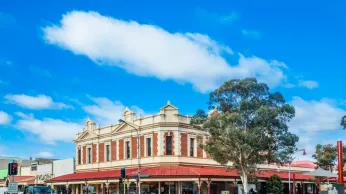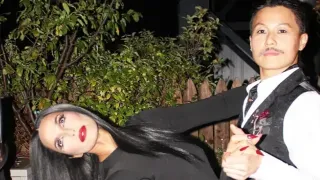
7 hours ago
Queer in the Outback: Why Broken Hill is Australia’s Next LGBTQ+ Cultural Oasis
READ TIME: 4 MIN.
When most LGBTQ+ travelers dream of Australia, they picture Sydney’s Oxford Street or Melbourne’s Fitzroy, where rainbow flags wave above every bar and parade. But a growing number of queer adventurers are turning their compasses inland, drawn by something both older and newer: the remote, red-earthed mining city of Broken Hill. Here, in a landscape seemingly untouched by metropolitan queer culture, a bold, authentic, and deeply welcoming LGBTQ+ community has quietly flourished—a story that’s finally being noticed by travelers seeking connection, creativity, and the quintessential Australian spirit.
Broken Hill’s queer-friendly reputation is not new, but it has often been overlooked in mainstream LGBTQ+ travel guides. The town’s claim to queer fame began with the 1994 film “The Adventures of Priscilla, Queen of the Desert,” much of which was filmed in and around Broken Hill. The film’s iconic scenes at the Palace Hotel—a proud local landmark—helped put the town on the map as a place where drag, difference, and defiant celebration of identity could exist even in the heart of the outback. The Palace Hotel, with its flamboyant murals and regular drag events, remains a beacon for queer travelers and allies alike, and its significance is cemented in Australia’s LGBTQ+ cultural memory .
In recent years, Broken Hill has transformed this legacy into an annual celebration: the Broken Heel Festival. Each September, thousands gather to mark the town’s queer heritage with days of drag, cabaret, music, and community events—drawing visitors from across Australia and beyond. The festival’s inclusive ethos is evident: events are family-friendly, accessible, and intentionally welcoming to transgender people and nonbinary attendees, alongside lesbian, gay, and bisexual visitors .
What sets Broken Hill apart is not only its visible pride but the depth of its local acceptance. Despite its rugged, conservative reputation as a mining town, the community has demonstrated an openness that surprises many. Local businesses—from art galleries to corner pubs—display rainbow flags year-round, and queer residents report feeling both visible and supported. In interviews, local LGBTQ+ people describe a “small town closeness” that fosters solidarity and genuine connection, contrasting with the anonymity of larger cities .
In particular, the Broken Heel Festival has become a point of pride for locals, regardless of identity. Residents volunteer, host performers, and participate in events, reinforcing a sense of shared ownership and celebration. “We’re all in this together,” a festival organizer told ABC News. “It’s about showing the world that you can be yourself, even out here” .
Broken Hill’s creative spirit extends far beyond its queer festival season. The city boasts a thriving arts scene, with more than 20 galleries and a long tradition of supporting outsider and Indigenous artists. The Broken Hill Regional Art Gallery, the oldest regional gallery in New South Wales, frequently features work by LGBTQ+ and gender-diverse artists, and local exhibitions often highlight themes of identity, resilience, and community .
For those who crave connection with the land, the surrounding outback offers striking landscapes: the Living Desert Sculptures, with their haunting rock forms; the Mutawintji National Park, sacred to the Barkindji people; and the star-filled night skies, which have inspired both artists and activists. It’s not uncommon for queer travelers to report moments of reflection and liberation here, shaped by both the vastness of the environment and the warmth of the people .
Broken Hill’s rise as a queer destination is not about novelty, but authenticity. Here, LGBTQ+ travelers find a sense of belonging that transcends the performative hospitality of bigger cities. The town’s story is one of transformation: from mining outpost to cultural oasis, from film set to living stage. For those seeking a travel experience that is as bold, resilient, and colorful as the queer community itself, Broken Hill offers:
- Genuine Inclusion: Far from token gestures, Broken Hill’s acceptance is lived daily. The community’s support for the Broken Heel Festival and year-round queer visibility sends a clear message: all are welcome .
- Cultural Depth: Visitors can immerse themselves in art, history, and Indigenous culture, as well as Australia’s unique drag heritage. The Palace Hotel is more than a backdrop; it’s a living museum of queer stories and celebrations .
- Connection: Small-town life means real conversations and the chance to be part of a close-knit community, if only for a weekend. Many queer travelers report leaving Broken Hill with new friends—and a renewed sense of belonging .
- Adventure: Whether it’s stargazing in the desert, exploring historic mines, or dancing until dawn at a drag ball, Broken Hill offers a travel experience that is both adventurous and affirming.
Practical Details for Queer Travelers
- Getting There: Broken Hill is accessible by train, plane, or road trip from major cities. The journey itself—through vast bushland and dramatic landscapes—sets the stage for the adventure ahead .
- Where to Stay: The Palace Hotel is the obvious choice for queer visitors, but there are also LGBTQ+-friendly guesthouses and motels throughout the town. Many local hosts are festival veterans eager to share recommendations and stories .
- When to Visit: The Broken Heel Festival takes place each September, but the town’s inclusive spirit endures year-round, making it a rewarding destination in any season .
- Safety and Inclusion: Broken Hill has a strong reputation for LGBTQ+ safety compared to other rural areas, with visible support from local government, police, and community organizations .
Broken Hill stands as living proof that queer joy and culture thrive far beyond the city lights. For LGBTQ+ travelers seeking not just a holiday, but an experience of belonging, creativity, and adventure, this outback oasis is ready to welcome you with open arms, sequins, and a story all its own.






